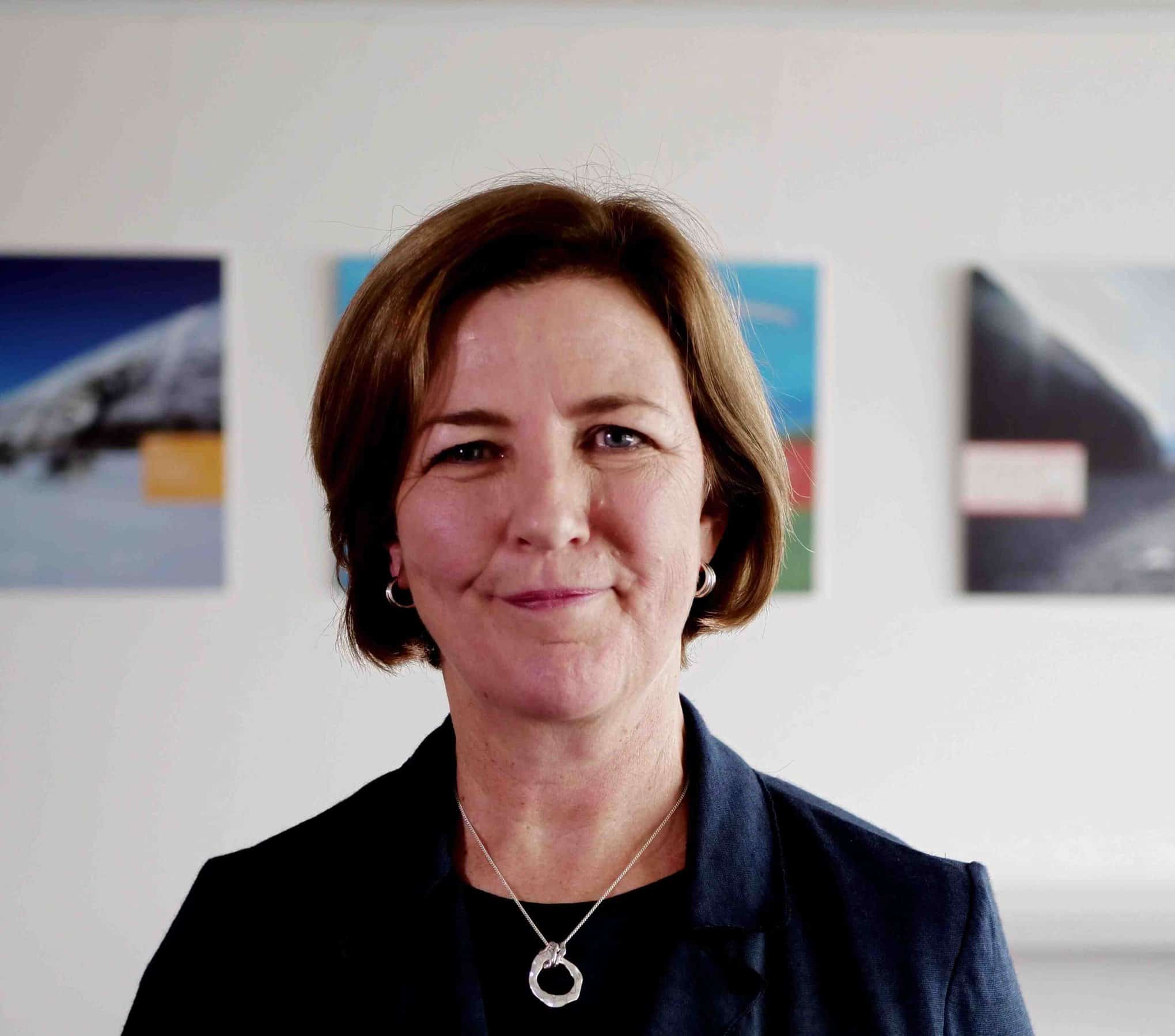
Alnylam’s Theresa Heggie
Alnylam and its extraordinary ‘gene silencing’ technology is making its debut in Europe with the launch of Onpattro. But can it achieve commercial success without a big pharma partner? PME talks to its European leader Theresa Heggie.
Even as it launches its first ever product Onpattro, Alnylam is already a biotech industry case study. That’s because its founding team embodies many of the best qualities of the US biotech sector: identifying the promise of cutting edge early stage science, then translating it into a major advance in severe disease, despite some major bumps in the clinical development road and when big pharma companies got cold feet – and then finally proving its value to patients and gaining approval.
This has been Alnylam’s story over the past 16 years, as it built on Andrew Fire and Craig Mello’s Nobel prize winning discovery that naturally occurring RNAi “silences” genes, thereby turning off production of proteins. Alnylam set out to mimic this natural process with its drugs – allowing them to block production of those proteins which cause disease at a much earlier stage than any existing medicines.
“What is unique is the speed at which we’re trying to do this. Building the foundation has been quite different from my past experiences of putting capabilities in place.” Theresa Heggie
The company has suffered many setbacks, not least when Novartis and Roche pulled their investment from RNAi in 2010, spooked by major obstacles around the safe and effective delivery of RNAi therapeutics into cells. Alnylam was also forced to abandon one of its first pipeline drugs, revusiran, after it was linked to deaths in trials, but persisted, developing a safer and more potent drug delivery platform. Led by founder and CEO John Maraganore, Alynlam finally crossed the line in August when it gained FDA and EU approval for its first drug, Onpattro.
The drug is licensed to treat to adults with stage 1 or 2 polyneuropathy, the destruction of nerves that results from hereditary transthyretin- mediated (hATTR) amyloidosis, a rare, rapidly progressive, fatal disease estimated to afflict about 50,000 people worldwide. Its pivotal APOLLO trial showed nearly all patisiran-treated patients saw the disease halted or slowed, with more than half seeing their neuropathy reversed.
The drug has now been launched in the US, where it has a list price of $450,000 per patient per year and in Germany, its first European launch market, where its will cost around €362,500 ($416,000) per patient per year.

These costs will be tempered by discounts in both markets, and by a money back guarantee in the US if patients fail to respond, but still a very high price which will face push back, especially in Europe. Analysts expect Onpattro sales to peak by 2023 at $1.5 billion, but much will depend on whether outcomes data the drug can produce long term benefits including survival, and how well rival treatments from Ionis and Pfizer fare.
A new therapy class, a new company
Overseeing the launch of Onpattro in Europe – and the launch of Alnylam as a new player in the market – is Theresa Heggie. She is Alnylam’s senior vice president, Europe and Canada and is based at the firm’s European headquarters in Zug, Switzerland. Heggie has lots of experience in the rare disease field, having served in senior roles at Shire, as a board member at Sobi and as CEO of German rare disease biotech Jerini.
Commenting on the task ahead at Alnylam, she says: “It’s an incredibly exciting time for the company. It’s now the commercial organisation’s chance to take the baton from Alnylam’s scientists.“They’ve set a really high bar in developing such an amazing technology, so we’re determined to meet that.”
Heggie has spent the last 18 months setting up the company’s operations in Europe, a major undertaking even for someone with her level of experience in pharma and the rare disease field. Asked what the biggest challenges have been, she says: “It [Europe] is a very complex region. Even with a centralised marketing authorisation, you have to take into consideration the local languages and national regulations.
“But of course that’s not unique to Alnylam. What is unique is the speed at which we’re trying to do this. Building the foundation has been quite different from my past experiences of putting capabilities in place.”
This speed is driven by the company’s own ambitious ‘Alnylam 2020 goal’ first set out in 2014: to have three of its RNAi products on the market, 10 clinical programmes and four late stage pipeline programmes.
The launch of Onpattro is the first step towards this goal, and it now looks set to file its next drug, givosiran, for patients with acute hepatic porphyrias (AHPs), in early 2019. “It’s been a lot of hard work, but we’ll be glad we spent time putting the infrastructure in place when we’re growing very fast,” says Theresa.
“Alnylam has been great at thinking far ahead, making decisions not just for today, but how to grow both from a product perspective and geographically.”
Onpattro’s competition
As is so typical of today’s biopharma sector, even when companies bring highly innovative medicines to market, there is very often a competitor or
two entering the field at the same time. So it is with Alnlyam: Ionis and Akcea secured EMA approval in July for their antisense candidate Tegsedi (inotersen), while Pfizer has just produced impressive data for its Vyndaqel (tafamidis).
Vyndaqel has been available in Europe since 2011 for Transthyretin (TTR) amyloid polyneuropathy, but isn’t yet approved in the US. Onpattro looked to have the edge in terms of clinical data, but Pfizer has new data showing tafamidis is effective in treating patients with cardiomyopathy – the heart damage caused by the disease which is seen as key for patients’ long term survival, and is already under review at the FDA.
While Onpattro has outshone Ionis’ product in safety and efficacy, analysts see Onpattro’s lack of cardiovascular claims in its US label as a weak point. Goldman Sachs downgraded the company because of this just as Onpattro gained its US approval, a judgement which saw its share price drop 8% on its first day as a commercial company.
The company points out that its European summary of product characteristics (SmPC) lists data from APOLLO on primary and secondary endpoints, including exploratory cardiac endpoints – long term data from it and its rivals on these measures will undoubtedly be the focus in the market.
Going it alone
That means a lot is riding on the early success of Onpattro in the US and Europe, and the company has chosen to launch its first product without a big pharma marketing partner. Sanofi was originally going to be its marketing partner in non-US and western European markets, but now Alnylam will be in sole charge of Onpattro in global markets, with Sanofi instead taking a lead marketing role for their co- developed haemophilia candidate fitusiran.
Industry commentators point out that the record of new biotech/specialist pharma companies in launching their own products without big pharma help isn’t impressive. Jacob Plieth at Vantage recently highlighted this trend, with companies like Tesaro, Clovis Oncology and Acadia failing to meet revenue expectations for their new launches. Alnylam can take heart in exceptions, however, such as Sarepta, with its Duchenne treatment Exondys 51, and hope it too can buck this trend.
Diagnosis
As with many new rare disease therapies, one of the biggest challenges for Alnylam is to bring as many patients as possible to diagnosis and then treatment.
Neurologists, cardiologists and Gastroenterologists are the specialists the company is trying to educate on hATTR awareness, as these are the areas where the neuropathy most frequently manifests itself.
In the US and Canada, the company has launched Alynlam Act, a free of charge genetic testing and counselling service
for people who may carry a gene mutation associated with hATTR amyloidosis. It has now expanded this service for acute hepatic porphyrias (AHPs), which givosiran treats.
The company is working with patient organisations and physicians in Europe to raise awareness of the disease and these ‘red flag’ symptoms of a potential hATTR amyloidosis to improve diagnosis rates, and for more of these genetic tests to be done.
“[Alnylam is a] multi- product, global, commercial-stage company with a deep and sustainable clinical pipeline and a robust product engine by the end of 2020; a company profile rarely, if ever, achieved in biotech.” CEO John Maraganore
Pricing & Reimbursement
After setting its sights on reaching the market for 16 years, Alnylam wants to get off on the right foot with payers. Maraganore, who is also chairman of US biotech industry association BIO, has been an outspoken critic of pharma companies who have used aggressive and unjustified price rises to increase profits – and is thus keen to explore innovative pricing models to match its innovative drugs.
Alnylam has agreed value-based agreements (VBAs) with leading US commercial insurers, with Harvard Pilgrim Health Care and Express Scripts, which includes money back guarantees if patients don’t respond to treatment.
Despite this progressive approach to pricing, the company has already been criticised by independent US health technology assessment organisation Institute for Clinical and Economic Review (ICER), which says the company needs to cut its price back drastically to be considered cost effective. Alnylam will face a similar process with Europe’s many national HTA organisations. England’s NICE is just beginning its review of Onpattro (in tandem with a review of Ionis’ Tegsedi) with a decision expected by early 2019.
Onpattro got its first European launch in Germany in early October, where the drug’s high list price €362,500 ($416,000) puts it on a cost par with other novel therapies, such as CAR-Ts Kymriah and Yescarta.
Heggie says country by country conversations on market access are well under way in Europe. “We’re having a conversation about value,
and then ultimately deciding the price and in some cases, also the total amount that will be reimbursed for that treatment. We’re really hopeful that those discussions will progress quickly thanks to the fantastic results from APOLLO.”
Pipeline and evolution of the RNAi platform
Analysts are agreed that RNA-based therapeutics could, in the long term, revolutionise how many diseases are treated, and Alnylam’s leadership in the field is its ace card. Alnylam has three more RNAi medicines in its late stage pipeline: Fitusiran in haemophilia, being co-developed with Sanofi; inclisiran for hypercholesterolemia being co-developed by the Medicines Company; and lumisiran for primary hyperoxaluria, which it expects to file in early 2020.

Alnylam’s CEO John Maraganore
John Maraganore told a recent analyst call that the company was now on track to become “a multi- product, global, commercial-stage company with a deep and sustainable clinical pipeline and a robust product engine by the end of 2020; a company profile rarely, if ever, achieved in biotech.”

Source: Alnylam
This is clearly a maturing late stage pipeline, but there remain risks, and Alnylam’s goal of having three products on the market by 2020 doesn’t leave much room for disappointments or delay. Its RNAi technology can be used to target any gene expressed in the liver, opening up a large number of potential disease targets, but Alnylam wants to broaden its reach.
The company is working on RNAi molecules which can work in CNS, something which would expand its therapeutic possibilities enormously, and hopes to have its first CNS-targetting candidate enter clinical trials by early 2020.




